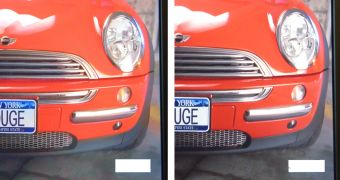Benchmarking is one of the most widely used methods of testing out the relative performance of one or another hardware component and establishing which company makes the best products from a given price and functionality range. Or at least that's how it is supposed to be as there were a number of flawed benchmarks in the past that were optimized for certain class of hardware products while clearly reducing the performance and thus the score of other components.
During a press conference last week AMD accused its graphics card rival Nvidia of cheating on the Silicon Optix HD HQV benchmark at the noise reduction section which is accountable for around 25 percent of the overall score. Nvidia has a dedicated technology for use in a HD environment called PureVideo and AMD has another one called Avivo and while this is normal, the problem appeared when cards from both companies delivered perfect scores of 100 in the HD HQV benchmark as AMD accused Nvidia of using an aggressive driver setting which will cause ghosting effects to appear and so degrading the overall image quality. On the other hand AMD claims that its own noise reduction algorithms will eliminate almost all noise without leaving ghost effect visible on the image. According to the news site dailytech when AMD tested the Nvidia technology with the ForceWare 163.11 beta drivers, the ghosting effect appeared on both noise reduction scenes.
Nvidia denies any cheating driver optimization saying that the old ForceWare 163.11 drivers come with an aggressive default setting which causes the ghosting effect to appear, as claimed by Rick Allen, Notebook and Multimedia PR manager at Nvidia. The company also said that the new drivers will not use such aggressive settings and users are able to adjust the noise reduction level from 0 to 100 percent with a simple slider. "As we openly told reviewers, using aggressive noise reduction settings may cause ghosting depending on the content played so we recommend using moderate settings. We also recommend the improved 163.44 drivers release a few weeks ago which reduce this effect," Allen said.
Another point raised by Nvidia is that their drivers allow users to control the entire noise reduction process and even disable it, while the AMD supplied drivers are adaptive leaving users with little or no choice over the post processing level.

 14 DAY TRIAL //
14 DAY TRIAL //